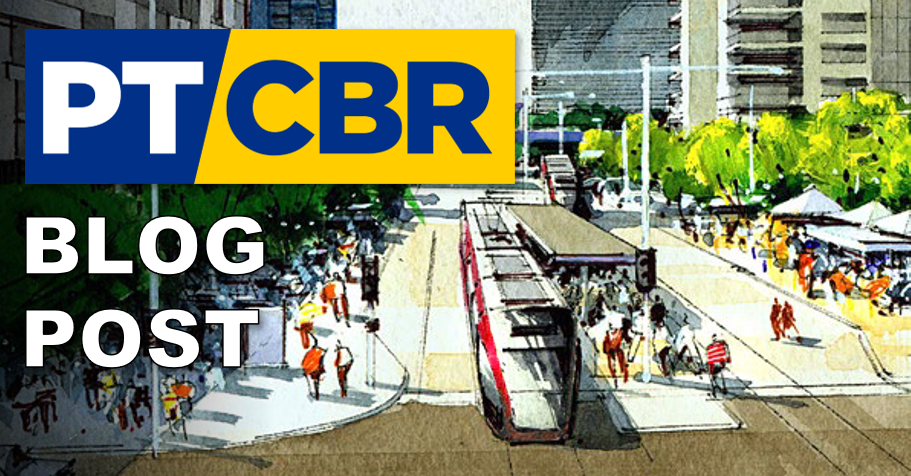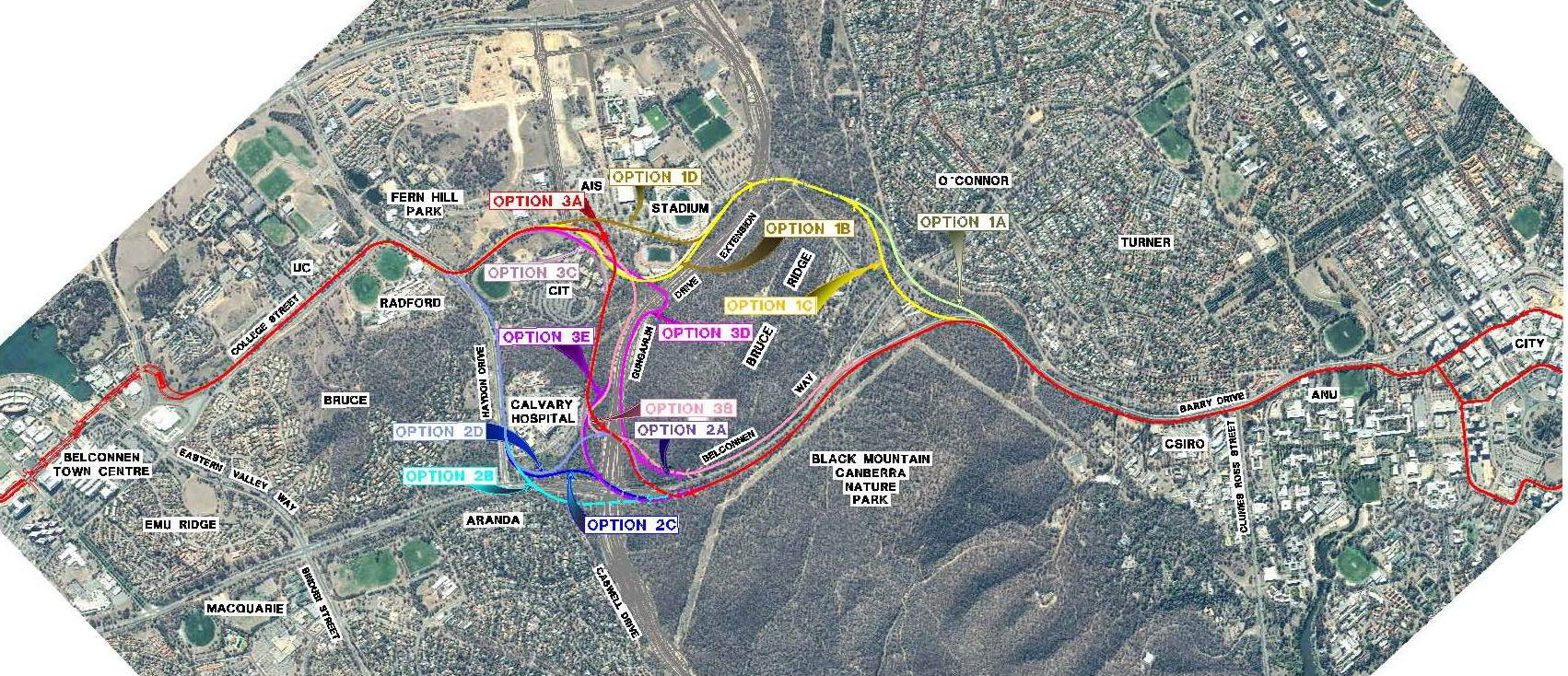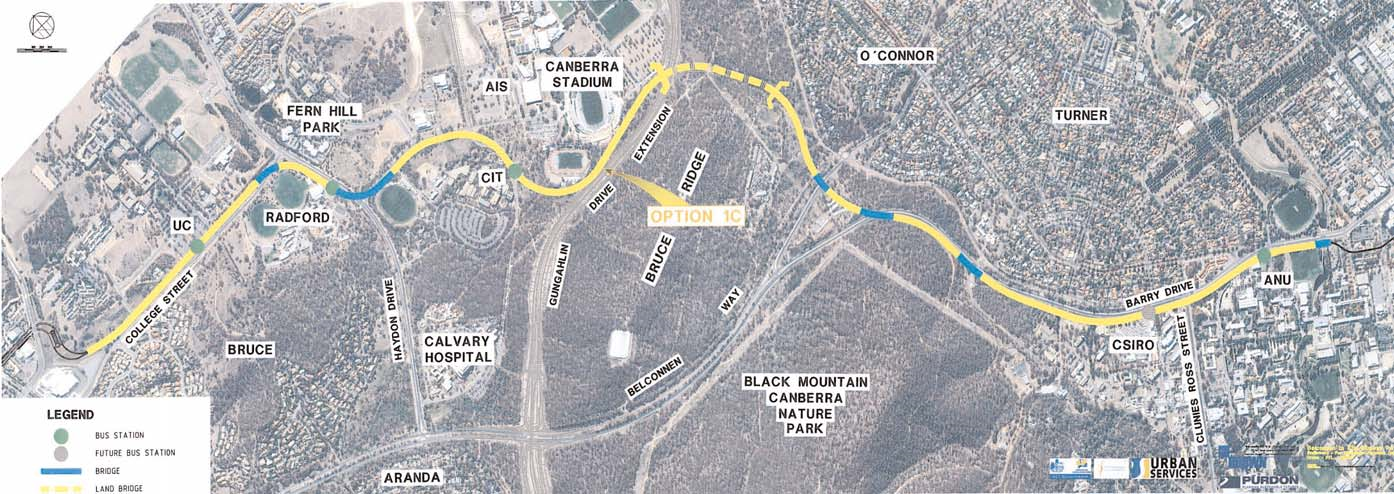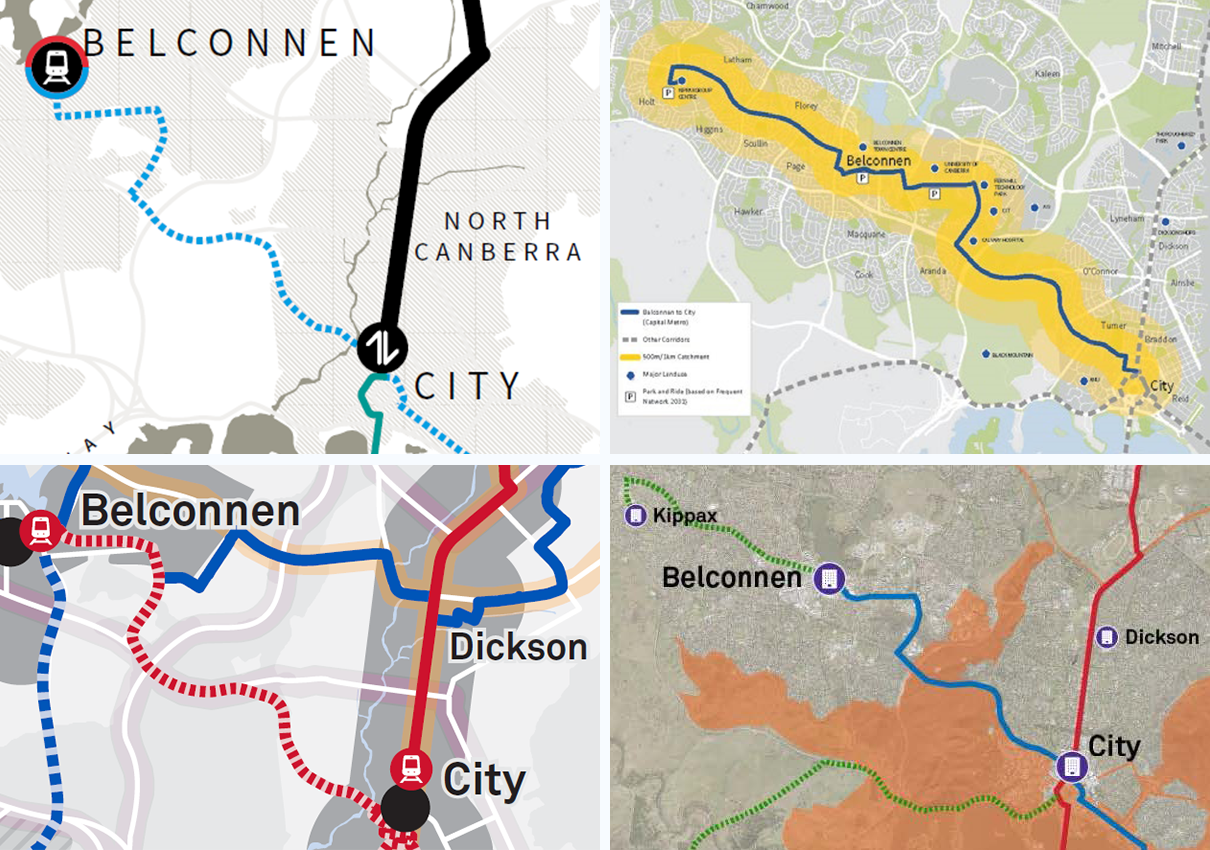
The recent announcement of $132.5 million in Commonwealth Government funding for Stage 2A of Canberra’s light rail network by ACT Liberal Senator Zed Seselja and Deputy Prime Minister Michael McCormack will stand as the definitive moment when the decade-long partisan bickering over the existence of Canberra’s light rail network finally came to a close.
The “light rail wars”, as they have been termed, are over. In their place, hopefully, will be a greater focus on how we roll out Canberra’s network of inter-town light rail corridors, rather than the now-redundant argument of whether they should be built at all.
(Note from 2022 – this prediction aged poorly)
This brings us to the purpose of this blog post, which is the flagged extension of light rail to Canberra’s north-west district of Belconnen. While it forms part of a more substantial east-west line connecting Kippax to the Airport (Light Rail Stage 3), this post will concentrate on the section between the Belconnen Town Centre and Canberra City.
Belco Bound
Compared to the handful of viable alignments for the City to Woden extension, there are many more ways to connect Belconnen to the City via the activity generators strung along the route, which include:
- University of Canberra
- Radford College
- Australian Institute of Sport (including Canberra Stadium)
- CIT Bruce
- Calvary Hospital
- CSIRO, and
- Australian National University.
Indeed, the study of initial options considered for the aborted 2005 proposal for a Belconnen to City busway reveals the sheer number of different alignments that could be considered for a future light rail line.

Of these options, the 2005 study whittled the list down to 13 shortlisted routes.

Which were then narrowed down further to four viable options.

Finally, two routes were selected for further detailed analysis – one that largely followed the existing inter-town bus route along College Street, Haydon Drive, Belconnen Way and Barry Drive (Option 2C) and the other which took a detour via the saddle between Bruce and O’Connor Ridges to provide a stop at CIT Bruce and the Australian Institute of Sport (Option 1C). Both routes were designed with gradients and curve radii that would permit future conversation to light rail.


While interim bus priority measures were eventually installed along sections of the Option 2C alignment as part of the 2012 “Belconnen Transitway” project, the 2005 busway proposal with its elaborate tunnels, flyovers and station-style stops was scrapped by Jon Stanhope’s Labor Government prior to the final route being selected.
The busway legacy
While the proposal for a city-wide network of busways may have been abandoned in part due to a perceived lack of support, its planning work continues to influence proposed light rail alignments across Canberra.
The below graphics are taken from official ACT Government reports on Canberra’s future light rail network. Each shows the Option 2C route via Haydon Drive as the indicative alignment for the Belconnen to City light rail route.

Alternative alignments have been floated, most notably by former ACT Opposition Leader and vocal light rail stage one critic Alistair Coe, who in 2013 suggested a route from Belconnen to the City that closely resembles Option 3E from the 2005 busway options analysis.

On paper, the attractiveness of this proposal is obvious. Unlike the ACT Government’s indicative alignment, this route runs to the east of Calvary Hospital and CIT Bruce to provide stops that are within easy walking distance of all the key activity generators between Belconnen and the City. By avoiding the saddle between the O’Connor and Bruce Ridges, it also avoids a potential repeat of the “Save the Ridge” campaign.
Despite being ranked above Option 2C in the 2005 busway options analysis, Option 3E was discounted due to its longer length, higher cost and greater environmental impact. However, many of the assumptions used during the assessment are outdated or suspect.
For example, the “perceived directness” of the route options was given undue emphasis, despite the fact that most options were estimated to take around seven minutes.

The low patronage of the existing bus stops at Calvary Hospital also meant that some routes were rated equally, regardless of whether they provided a stop at the hospital.

It is worth noting that these studies were conducted prior to the current proposal being considered by the Australian Sports Commission to consolidate the footprint of the Australian Institute of Sport by selling off major assets, including Canberra Stadium, the AIS Arena and the surrounding land, to the ACT Government for future residential and commercial development.
This proposal dovetails neatly with the ACT Government’s plan to construct a new Canberra Stadium on the site of the Civic Pool on Constitution Avenue, which just so happens to be further up the line of the proposed east-west light rail corridor.
It is hard to avoid coming to the conclusion that not including a stop at the current Australian Institute of Sport precinct would be a significant missed opportunity.
Next steps
These are just some of the reasons to question the ACT Government’s current indicative alignment for the Belconnen to City light rail route. There are, or course, many more options that are worthy of further analysis, including:
- the use of Macarthur Avenue instead of Barry Drive
- proposals from both UC and ANU to run sections of the route through their respective campuses
- the location of the bus and light rail interchange in the Belconnen Town Centre, and
- opportunities for interoperability between the north-south and east-west light rail lines.
Rather than leaving it to the last minute, PTCBR will be lobbying the ACT Government to conduct an honest and transparent consultation process for the Belconnen to City light rail line, with the comparative costs, patronage estimates, journey times, development opportunities and environmental impacts of the various alignments being made publicly available.
After a decade of rancorous debate, Canberrans deserve an informed and civilised discussion about the future form of our light rail network.